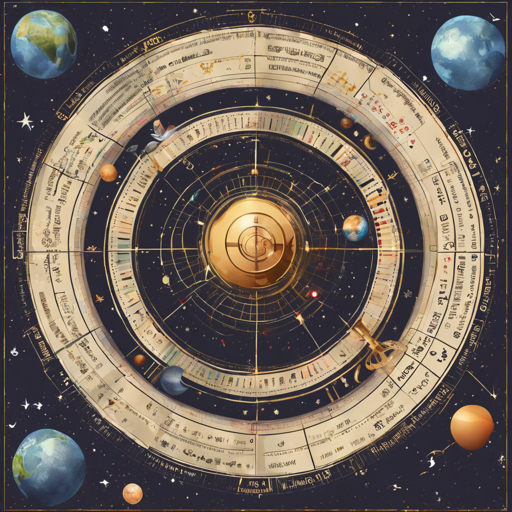Since time immemorial, civilizations have marveled at the relationship between celestial movements and earthly events. The ancient Babylonians were among the first, documenting celestial patterns as early as 1800 BC. While some embrace astrology, others might dismiss it as mere superstition. But, could there be more than meets the eye? In this article, we’re going to dive into the fascinating world of financial astrology and explore how planetary cycles might influence market behaviors.
The Cosmic Connection
To truly appreciate financial astrology, let’s draw a parallel: imagine the planets as musicians in an orchestra. Each musician plays a different instrument (their own cycle) that, when harmonized with others, creates a symphony (market trends). Just as musical notes can evoke emotions and tell a story, planetary movements could embody underlying market sentiments. Over the years, analysts and statisticians have noted that seasons—be it yearly, monthly, or even daily—possess a rhythm that might correlate with cosmic patterns.
The Yearly Dance of Celestial Bodies
- Year: Symbolizes Earth’s relationship with the Sun.
- Month: Resembles the Moon’s 28-day cycle.
- Day: Reflects Earth’s rotation.
- Planetary Names: Days even bear the name of planets!
This interplay raises intriguing questions: Could other planetary cycles, beyond just the Sun and Moon, similarly affect earthly events? While many correlations in astrology might just be mere serendipity, some researchers have observed consistent trends linking planetary cycles to financial and social crises.
Testing Cosmic Patterns
The beauty of modern existence is that we now wield powerful tools previously unimaginable to ancient civilizations. With the rise of machine learning and statistical methodologies, we have the ability to validate our astrological inquiries. By harvesting historical data and employing statistical software—such as R—you can investigate the potential relationships between planetary positions and future market trends.
Analyzing Planetary Angles
Understanding how planets interact through their angular relationships opens doors to insightful analytics. These angular relationships are akin to investigating how different musicians’ plays interact to create a cohesive performance. Each planet has its own unique influence, and their distances and angles can tell us a lot about market dynamics.
Visual Insights
A comprehensive analysis often requires visual representations of planetary angular relationships. Here are visuals you might explore:
- Longitude distance from Moon
- Longitude distance from Mercury
- Longitude distance from Venus
- Longitude distance from Sun
- Longitude distance from Mars
- Longitude distance from Jupiter
And many more angles representing various planets and their positions!
Troubleshooting Your Analysis
If you encounter challenges while exploring the association between planetary cycles and market behaviors, here are a few troubleshooting tips:
- Ensure your data is clean and devoid of anomalies that might skew results.
- Validate your statistical methods; review the assumptions behind your models.
- Experiment with different models—sometimes, a diverse approach yields unexpected insights.
- Collaborate with fellow astrophysics and market analysis enthusiasts to gain new perspectives.
For more insights, updates, or to collaborate on AI development projects, stay connected with fxis.ai.
Conclusion
At fxis.ai, we believe that such advancements are crucial for the future of AI, as they enable more comprehensive and effective solutions. Our team is continually exploring new methodologies to push the envelope in artificial intelligence, ensuring that our clients benefit from the latest technological innovations.
As we navigate these cosmic waters, remember: curiosity is the key to discovery. Whether you’re a skeptic or a believer, the exploration of the celestial influences on financial markets is bound to unveil new horizons.

